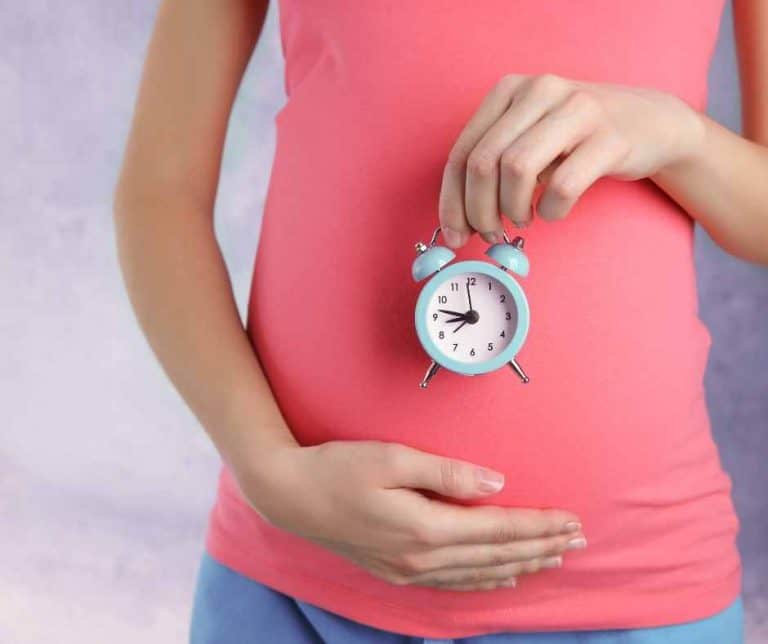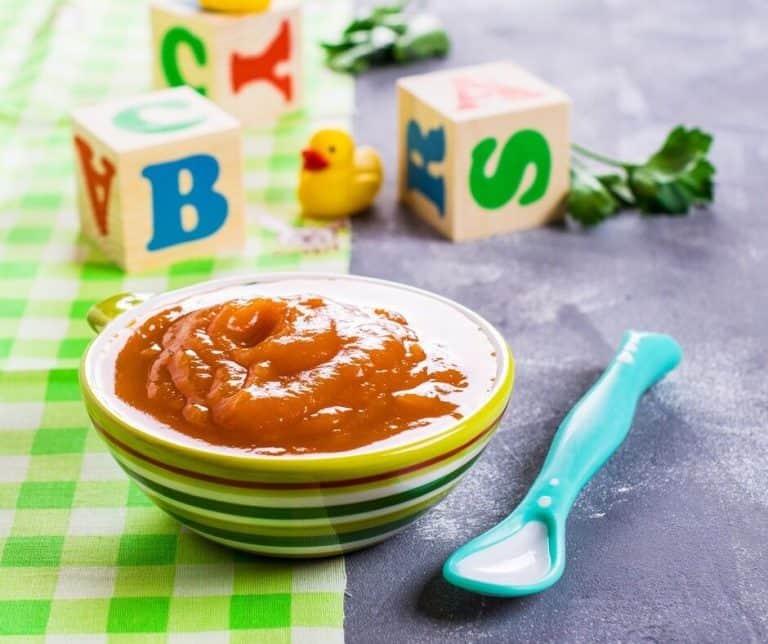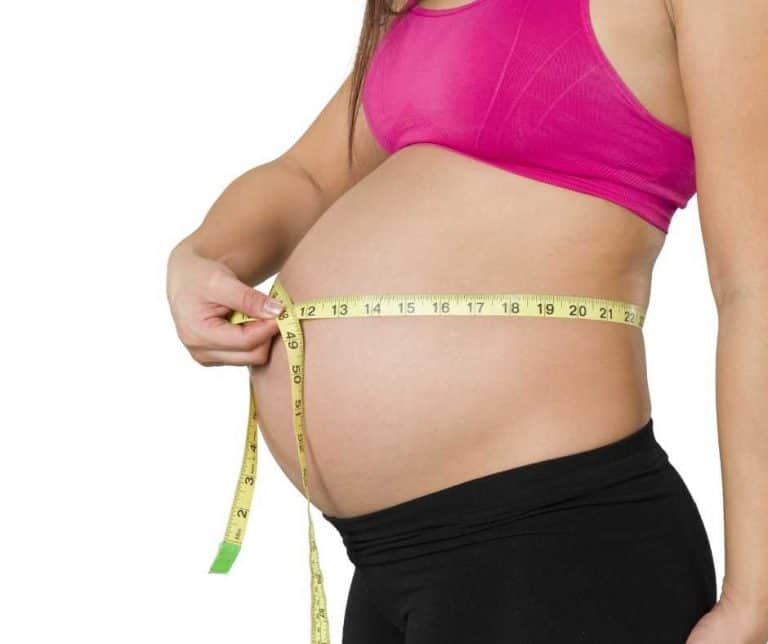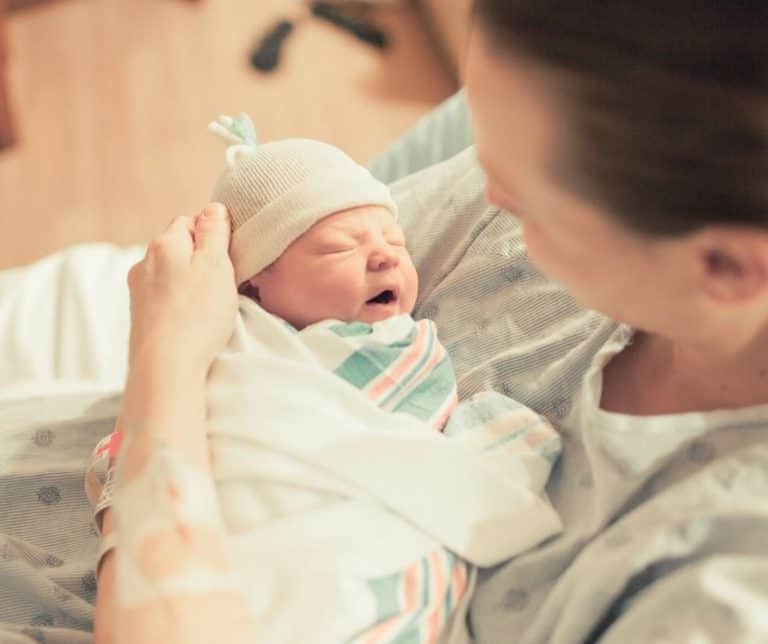Pregnancy Trimester Guide
We may earn money from the products/companies mentioned in this post. As an Amazon Associate I earn from qualifying purchases. For more information, read our Terms & Disclosures.
The 40 weeks of your pregnancy are divided into three trimesters (about 3 months each). Learn about each trimester: what you as mom are experiencing, what is happening with your baby, and what you can be doing to prepare for birth and a precious new addition to your life.
What Are Trimesters?
Trimesters are, quite simply, the three stages of your pregnancy. Each one lasts about three months and knowing what is happening to your body, to your baby, and how you can prepare for your baby’s arrival in each one will help you.

The first trimester starts with your last menstrual cycle preceding conception and is completed at the end of your 12th week of pregnancy. The second trimester is from weeks 13-26 and your final (third) trimester starts with week 27 and ends at delivery.
Your pregnancy trimesters represent the stages of pregnancy from the beginning to the end as your baby grows and prepares for birth. Your body will go through many changes during this time and it helps to know what to expect during each one.
The very first step is to figure out your pregnancy due date and then you’ll know when to anticipate each pregnancy milestone. The second step is to start making simple changes that will help you and your baby have the healthiest pregnancy and birth possible.
Your pregnancy will last for about 40 weeks. The count begins with the day your last normal period started and ends with childbirth. It can help to ease your mind and help you enjoy your pregnancy more when you know that the things that you’re experiencing are normal.
Please note: I am not a doctor and the following information is not intended to provide or replace medical advice; it is for entertainment and informational purposes only.
If you’re looking for a more in depth look, check out this Month By Month Pregnancy Guide For Moms and also Baby’s Week By Week Growth.
The First Trimester Of Your Pregnancy
Your first trimester starts with week one and runs through week twelve.
Changes in your hormones generate changes all throughout your body that start with you missing your period. This is usually the first sign that indicates you may be pregnant. However, it is possible for some women to have a light period and still be pregnant.
Your baby has been to take shape at the very moment of conception and things are happening rapidly behind the scenes. Not sure when things started and how to figure out your due date? Check out these pregnancy due date tips.
What’s Happening To Mom In The First Trimester?
You might think you’re coming down with the flu before you discover you’re pregnant because you may feel very tired, have headaches, and feel like you’ve got an upset stomach that may or may not be accompanied by vomiting.
This is called morning sickness (although, let’s face it, it can happen at any time of day). If you suffer from morning sickness, try eating small meals several times a day instead of three big meals. Many women notice it happening at the same time each day and it may or may not come in waves.
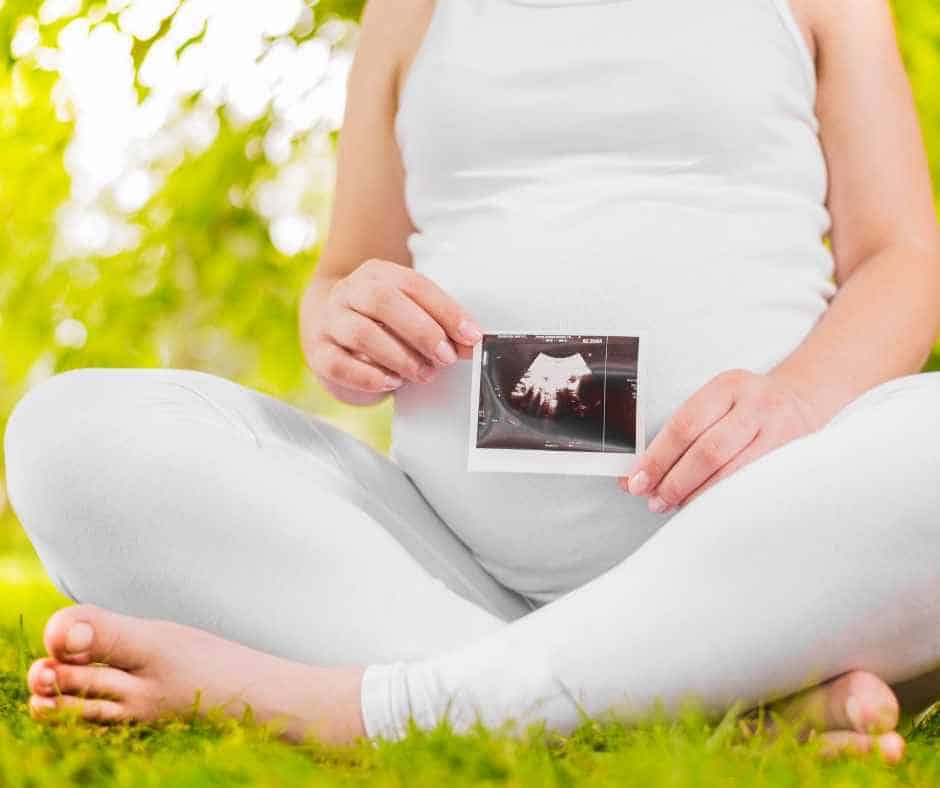
Eat foods that are easy to digest and if a particular food or smell makes you feel sick, try to avoid eating or being around these. Sip slowly on water and other beverages instead of drinking them quickly and sit up for awhile after eating a meal to give your food time to digest.
If you are constantly sick and cannot keep any foods down, see your doctor as this isn’t healthy for your or your baby.
You may begin to crave certain foods and you may lose your taste for foods that you normally enjoy. You will probably like some things your body needs for health, but your might also find yourself thinking of some odd combos like pickles and ice cream or peanut butter and watermelon.
Most women notice they have to urinate more often than usual and your breast will begin to swell and feel tender. Some women gain weight during the first trimester and others lose weight due to the nausea.
Most women will also experience mood swings that can change very quickly. Give yourself a lot of grace here and make sure you are resting when you need it.
Constipation, heartburn and indigestion may be present near the end of the first trimester. Avoiding caffeine can help with both the heartburn and constipation, but you should also eat fiber-rich foods and drink at least 8 to 10 glasses of water a day. Avoiding spicy foods that would normally cause heartburn can help with the indigestion.
Some women won’t have any of these symptoms during the first trimester and keep in mind that every pregnancy is different. Therefore, you won’t necessarily go through the same things with your second child as you did with your first, so even if this is a repeat experience for you, it will probably be completely unique.
What’s Happening To Baby In The First Trimester?
During this time your baby has grown from simple cells to having all of his or her vital organs forming, baby is moving around in your womb, and even sucking their thumb.
What Preparations Should Happen In The First Trimester?
You should make an appointment with your OB/GYN as soon as you learn you are pregnant. They’ll guide you toward the best prenatals or you can do some research on ones you like.
My favorite prenatals have always been whole food, gluten free, non-GMO, vegetarian prenatals by Garden of Life. During the first trimester with some pregnancies I couldn’t keep them down and took prenatal gummies instead.
Right now you should be focusing on embracing this new life change, seeing your doctor, eating well, drinking plenty of water, getting your rest, and trying to at least walk regularly. A healthy body is not only good for your baby, but it will help you throughout your pregnancy and even during labor.
Your tummy isn’t showing yet, although you may need a larger bra. As your breasts get heavier you’re going to want to make sure you have plenty of support even at night.
Maternity sleep bras are helpful for that and can even be worn postpartum if breastfeeding. If you’re planning to nurse your baby, you can start wearing nursing bras now to save an extra purchase later.
And, of course, the fun stuff like picking out a name for your baby and thinking nursery themes will start as you begin to get excited about your little one’s arrival.
Your Second Trimester
The second trimester starts at 13 weeks and runs through 26 weeks. For many women it’s a lot easier because a lot of the pregnancy first trimester symptoms have subsided.
You won’t look pregnant during the first trimester pregnancy stages but by the beginning of the second trimester, you may start showing slightly as baby gets bigger.
What’s Happening To Mom In The Second Trimester?
During the first part of the trimester, you may start having aches and pain in your back, abdomen, thighs and groin region. This is due to the baby’s growth, weight gain and your joints loosening to accommodate for the pregnancy.
Resting more can reduce some of the pain and applying heat to the area may help.
Usually some of the fatigue and most of the nausea has dissipated and you start feeling like doing things you enjoy again. However, you will begin to notice other changes especially in your body.
Some women experience itching that usually occurs in the abdomen but you can also itch on the palms of your hands and the soles of your feet. The stretching of the skin and hormones causes this but it normally goes away after you have your baby so it’s nothing to worry about.
If the itching is accompanied by vomiting, jaundice, fatigue or a loss of appetite, then see your doctor.
Tummy butter may or may not prevent stretch marks, but some moms find it helps relieve the itching on their skin and makes them more comfortable.
You might begin to notice patches of dark skin around your forehead, upper lip, nose and on both sides of your cheeks, also. The skin around your nipples will also become darker and some women have a dark line that runs from the navel to the hairline.
Swelling of the face, ankles and fingers are common and you may feel a tingling or numb feeling in your hands. As the baby grows, stretch marks will also begin to appear on your abdomen, buttocks, thighs and breasts.
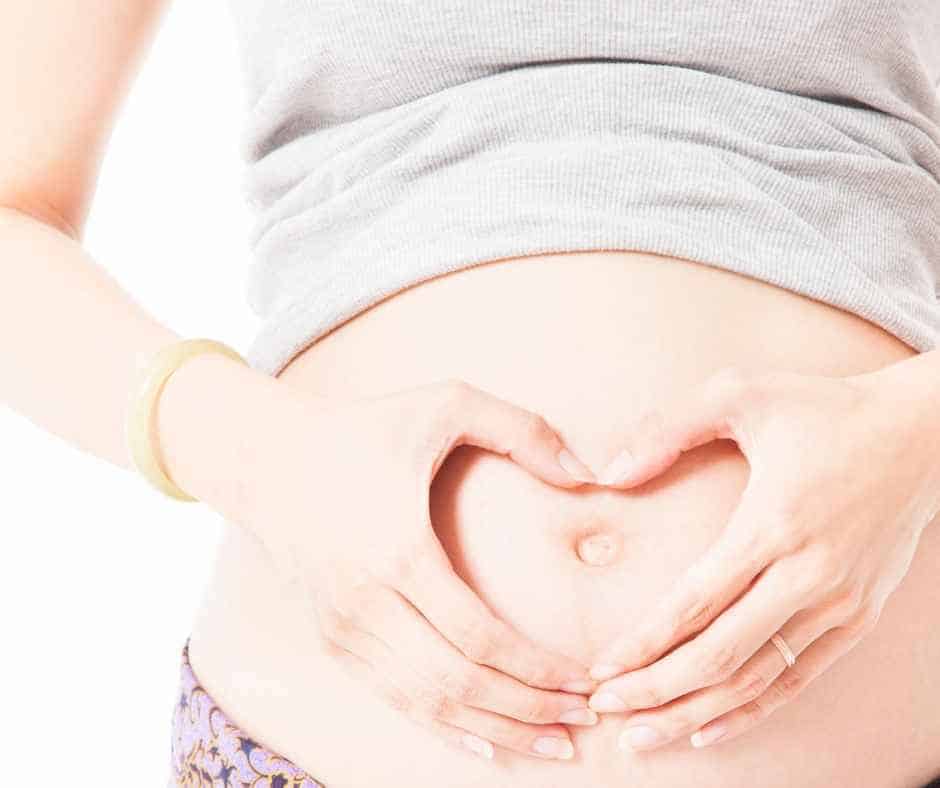
What’s Happening To Baby In The Second Trimester?
Baby has fingerprints, sucks his or her thumb, all vital organs are reaching full development, and by the end of this trimester your baby will be able to hear your voice as you talk to him or her.
What Preparations Should Happen In The Second Trimester?
Make sure you’re taking care of your body. A pregnancy pillow will help support your growing belly and stretching hips, back, and legs to make you more comfortable.
Keep walking and consider wearing supportive sneakers or a good pair of sandals; supporting your body is doubly important during this time for balance, safety, and comfort.
Take good care of your skin and embrace the changes happening to your body; they are proof of a miracle!
Talk to your OB/GYN about developing a birth plan so you have plenty of time to explore your options and make the most informed decision for you and your baby. If you plan to have a doula, begin looking for one now.
You also need to decide if you want to know your baby’s gender or be surprised, as your bloodwork and ultrasounds will be revealing this and your doctor will need to know whether or not to share the news.
This a great time to start your baby registry, too! If you decide to find out if you’re having a boy or girl you’ll be able to register accordingly, but even if you opt to be surprised there are plenty of things you can ask for (like a quality car seat!) so you can start preparing.
And one quick note – get your teeth cleaned. If you wait too long, they won’t be able to do it for you.
Your Third Trimester
Your third trimester begins at 29 weeks and last through week 40. Your baby will be growing faster now, which means so will you.
What’s Happening To Mom In The Third Trimester?
You’ll be running to the bathroom even more (can you imagine?). You may also have difficulty breathing the larger you get and your heartburn and indigestion may get worse.
You will begin to feel fatigue and need more rest throughout the day. This is normal so don’t worry. Your body is helping you prepare for labor.
During this trimester, you’ll probably notice more swelling in your ankles, hands and face and if you had hemorrhoids in the second trimesters, you may still have these or they could get a little worse.
As your belly continues to get bigger it can be hard to find a comfortable position, which makes it difficult to sleep. Having a pregnancy pillow will help you with that.
Your breast will noticeably increase in size and start to feel full and heavy as your body prepares for breastfeeding. Your breast will be sore and may leak colostrum, which is a thick fluid with a yellowish color.
You can use breast pads to absorb the fluid and a good support maternity bra will help ease some of the discomfort.
During the end of the third trimester, the baby will start moving lower to prepare for birth and you’ll begin to feel contractions. At first, you’ll have false labor, which can feel like the real thing but your baby is not quite ready to be born yet.
You may also experience leg cramps and dizziness throughout your pregnancy.
What’s Happening To Baby In The Third Trimester?
Your baby will settle in head down, nice and low in your pelvis. When baby officially “drops” you’ll start to be able to breathe better once again.
Baby’s lungs are finishing up their development and by week 38 should be just about done and your baby will be ready to meet you any day.
Your baby will grow steadily and things will feel very cramped (for both of you), and you’re both going to meeting very soon.
What Preparations Should Happen In The Third Trimester?
This is when you’ll take your birthing class, finalize your birth plan, pack your hospital bag, finish decorating the nursery, and rest.
Yup, that’s right: rest. You need to be well rested and storing up energy for the exhausting process of labor and delivery. Plus, shortly before you go into labor you’ll start nesting which will be a flurry of last minute, often frantic, activity to prepare for baby.
With 8 kids, I’ve nested in all kinds of ways from cleaning baseboards with tooth brushes (I still don’t know why, but it seemed utterly essential at the time!) to re-folding baby clothes, to alphabetizing movies and books. When it hits, it will make perfect sense to you and often leave those watching you smiling in amusement.
Know What To Expect & Remember To Take Care Of You
These stages of pregnancy will vary for each woman and for each pregnancy but this will give you a good idea of what to expect during each stage of your pregnancy. Knowing what to expect helps you prepare so you can relax more and enjoy this exciting time in your life.
Take good care of yourself physically and emotionally, as it’s important for both you and your baby. Because the unknown can be scary, don’t be afraid to ask questions of your doctor, experienced friends, or your mom…but remember that Google can be a crazy place.
For more information about your changing body and your growing baby, check out your Month By Month Pregnancy Guide For Moms and also Baby’s Week By Week Growth.



